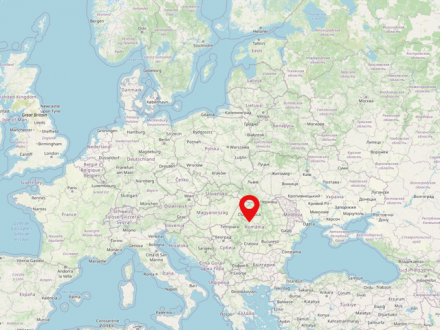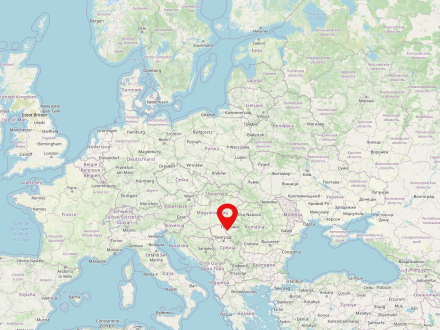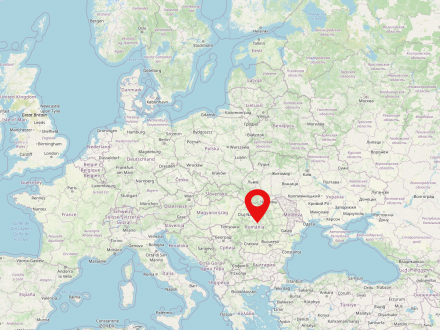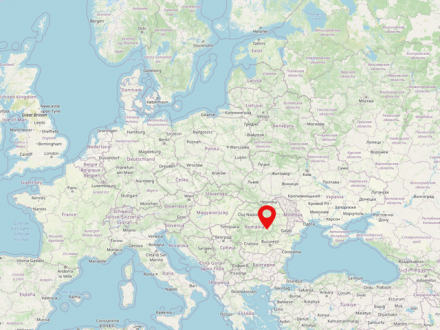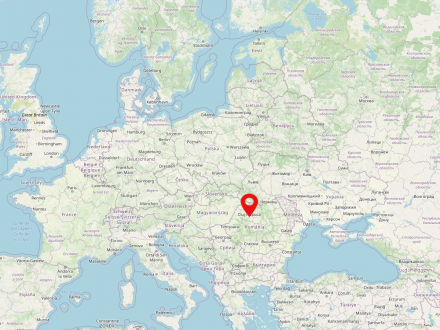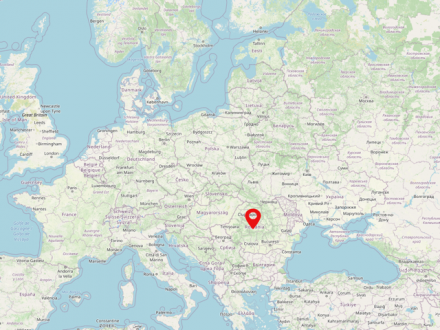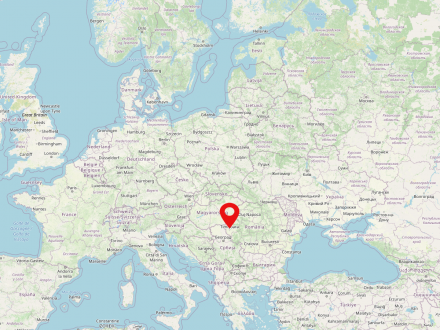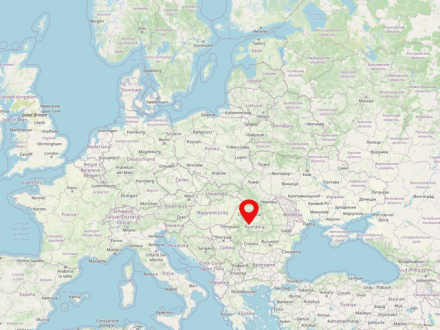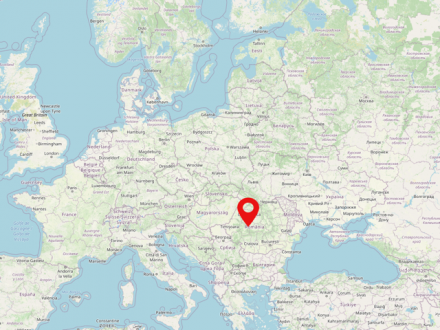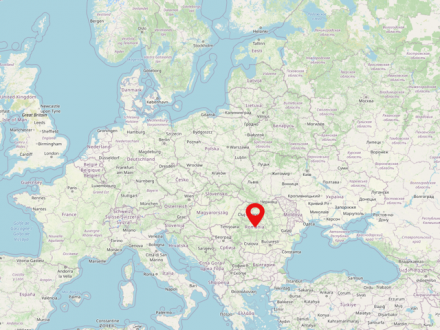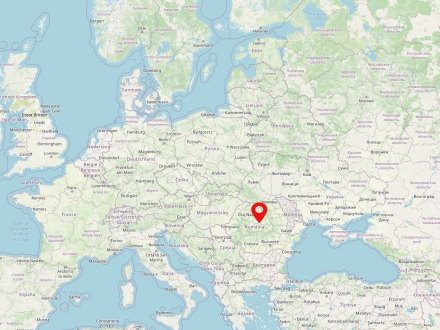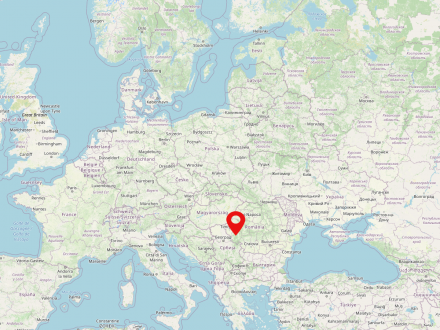Transylvania is a historical landscape in modern Romania. It is situated in the center of the country and is populated by about 6.8 million people. The major city of Transylvania is Cluj-Napoca. German-speaking minorities used to live in Transylvania.
The Banat is a historical landscape located in South-Eastern Europe, in the states of Serbia, Hungary and Romania. The region is situated between the rivers Danube, Marosh and Tisza, as well as a southern part of the Carpathian Mountains and the lowland plain of Hungary. The main city of the Banat is Timișoara in Romania.
Romania is a country in southeastern Europe with a population of almost 20 million people. The capital of the country is Bucharest. The state is situated directly on the Black Sea, the Carpathian Mountains and borders Bulgaria, Serbia, Hungary, Ukraine and Moldova. Romania was established in 1859 from the merger of Moldova and Wallachia. Romania is home to Transylvania, the central region for the German minority there.
Brașov is located in the historical region of Transylvania in the center of Romania and is a large city with almost 250,000 inhabitants. Brașov was one of the settlement centers of the Transylvanian Saxons.
Cluj-Napoca (German: Klausenburg, Hungarian: Kolozsvár) is a major city in the Transylvanian county of Cluj in northwestern Romania. It is the second largest city in Romania with about 324,000 inhabitants.
Sibiu (rom. Sibiu, hung. Nagyszeben) is a city in central Romania. With almost 147,000 inhabitants it is the capital of the Sibiu County. It is located in the historical region of Transylvania and is an important place of the German speaking minority of the Transylvanian Saxons. Sibiu is located about 275 km northeast of Bucharest, the capital of Romania.
Timișoara is a large city in western Romania, not far from the borders with Serbia and Hungary. It was a settlement center of the German-speaking Danube Swabians until World War II. Timișoara has just under 320,000 inhabitants.
Alba Iulia is a Romanian city in the historical region of Transylvania in the center of the country. It is inhabited by nearly 63,000 people and is an important center of the region. The city is situated northwest of Bucharest, the capital of Romania.
Sebeș (German: Mühlbach) is a Romanian town in Alba County. The city is placed in the historical region of Transylvania in central Romania and is inhabited by about 27,000 people. Sebeș is located not far from the mouth of the river of the same name into the Mureș.
Mediaș (German: Mediasch) is a Romanian city in the Transylvanian county of Sibiu. It is inhabited by about 47,000 people and is located in central Romania. The city is located in a valley in the Carpathian foothills.
Sighișoara (German: Sighisoara) is a Romanian city in the Transylvanian county of Mureș. The city is inhabited by about 28,000 people and is located in central Romania on the Târnava Mare, a tributary of the Mureș. The city was an important place for the Transylvanian Saxons.
Reșița (German: Reschitza or Reschitz) is a Romanian town in Caraș-Severin County. It is situated in the historical region of Banat, not far from the border with Serbia, in the far west of Romania. Reșița is home to 73,000 people. The city was inhabited by many Transylvanian Saxons.


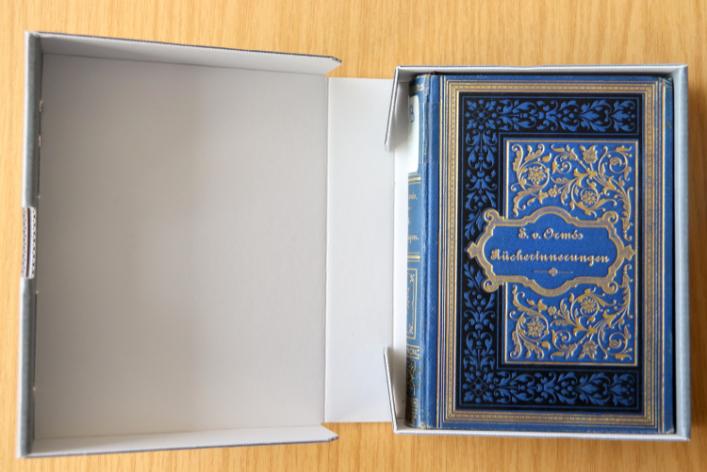

In order to prevent their imminent decay, to enable their use and to ensure the preservation of the originals, about 300 kg of books had to be cleaned, de-acidified and partly treated for conservation. The highest priority in all restoration measures was always the greatest possible preservation of the original.
In the next step, major restoration work was carried out on 374 volumes. New bindings were made and spines were repaired that had been damaged by incorrect storage or handling. For particularly beautiful or rare books, custom-fitted slipcases were made of acid-free cardboard to protect them on the shelf from abrasion by neighboring books. 600 rare capsule typefaces , i.e. thin booklets of less than 100 pages, were packed in acid-free dust jackets and are now stored horizontally in special archive boxes for more gentle storage.
For those books that could not be de-acidified due to the condition of the paper, but also for copyright-free books from the project, digitization is now being increasingly pursued, in cooperation with the Bavarian State Library and other organizations. Thanks to the generous support of the CEC with a donation of more than €70,000, the rare books will be preserved as originals for centuries to come through de-acidification and restoration in the IKGS library. They will soon be made accessible worldwide as digital copies.



